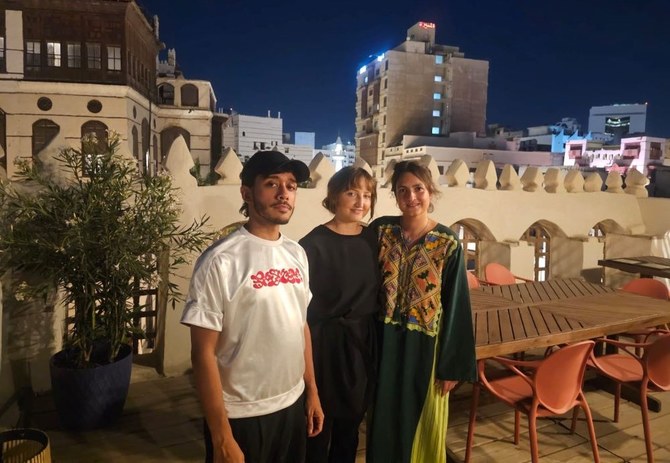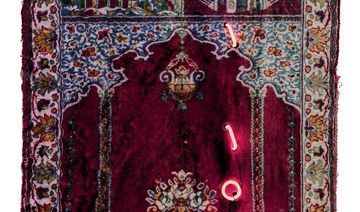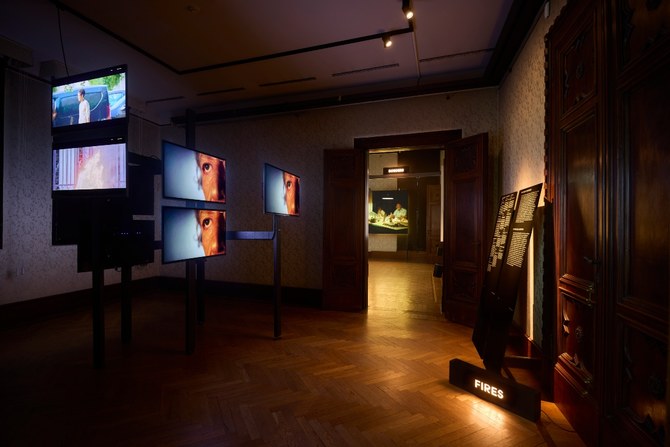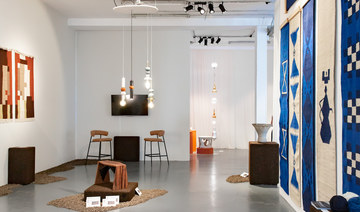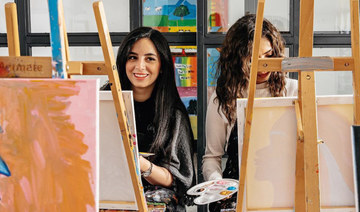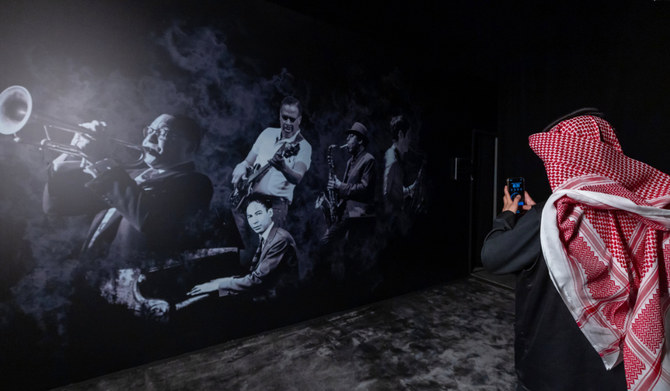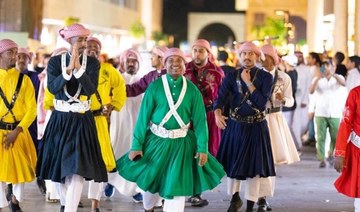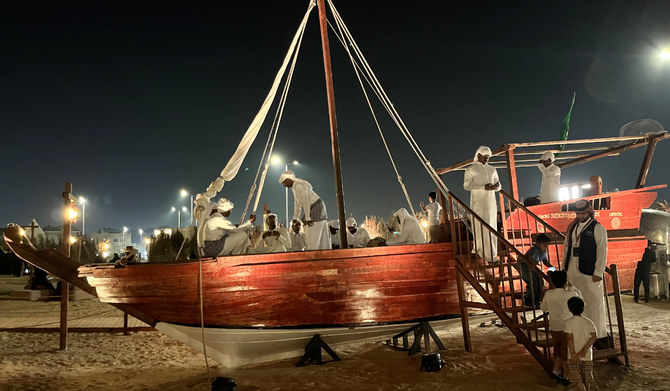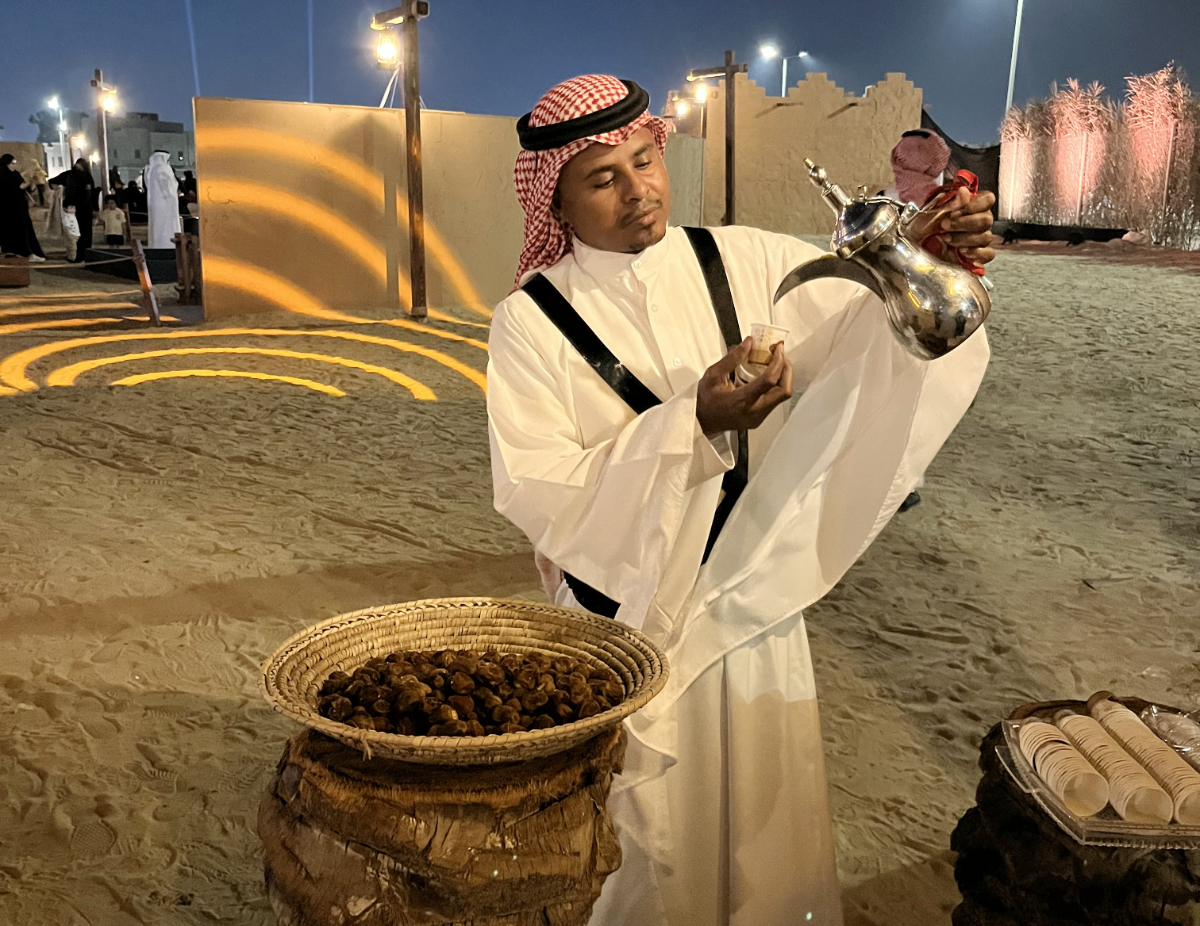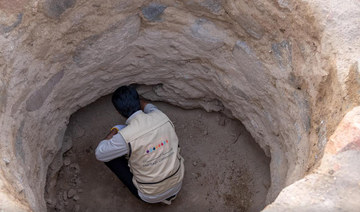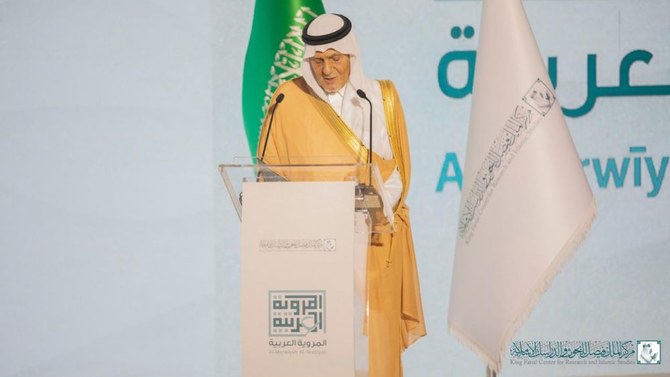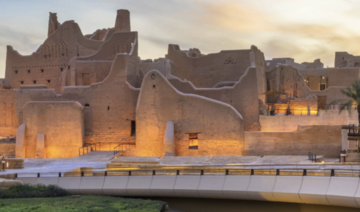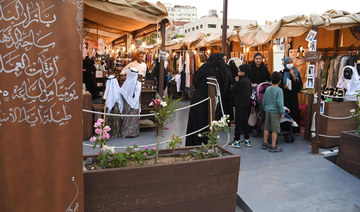JEDDAH: The Athr Foundation has launched the first open studio at Bait Shouaib, an artists’ residential program located in the heart of Al-Balad.
Bait Shouaib offers an immersive and supportive environment, fostering creativity and cultural exchange among the rich heritage of its surroundings.
During the residency, artists learned about the Al-Balad district from the perspective of a local inhabitant, resulting in studio presentations and site-specific installations.
One artist, Badr Ali, told Arab News: “My memories of Al-Balad were from childhood, where my mom warned me of its rough and dangerous nature. Coming from Germany, I took a hiatus from art and decided to join this residency for inspiration. I was struck by the district’s homogeneity and outdated toys, sparking research on their intended audience. These toys, originally meant for Umrah migrants, now seem out of touch with today’s tech-savvy kids.”
He added: “Through my art, I explore the irony of these toys in a district that has undergone gentrification. My painting highlights the decay of mass-produced toys, using glitter and embellishments to emphasize the contrast between superficial esthetics and inherent quality issues. This residency in Jeddah has been a unique experience, different from my previous ones in France, Germany, and the UK. The cultural nuances and art scene in Saudi Arabia have presented new challenges and inspirations for my work.”
The intimate perspective offered by the artists has deepened their understanding of Al-Balad’s rich cultural heritage. The night-time festivities during Ramadan added an extra layer of enchantment.
Artist Tamara Kalo said, “This residency program has been really inspiring. I feel like there are so many things I wanted to do and not enough time. But, also, that’s the beauty. Maybe it’s like you get to explore little bits and pieces of things that are inspiring, then you do what you can and it still opens doors for other things in the future.”
On her artwork, she said: “The bedspace is a realm of the subconscious, holding tensions of dreams and nightmares, comfort and discomfort. By intertwining my body with a green ribbon on the bed frame, I create a cage-like enclosure for imaginative safe space. The green screen material offers infinite representation possibilities, blurring the line between material and immaterial through video overlay. This references the virtual world as a collective subconscious that interrupts our rest. The roshan-turned-camera work brings the public into private space by capturing direct light reflections.”
And Abdulla Bahiji’s innovative approach to reimagining the urban landscapes of Jeddah and the Hejaz region involved transforming concrete blocks into biodegradable incense burners infused with scents and flora.
Reflecting on his experience as a newcomer to Al-Balad, he said: “As a first-time dweller in Al-Balad, I found myself captivated by its essence, enveloped in a rich tapestry of scents ranging from Jawi bakhoor to fish, oud to meat. These fragrances not only altered my perception of time but also served as tangible markers of the city’s evolving narrative. Investigating the history of Al-Balad, I uncovered the remarkable resilience of the local businesses as they transitioned from traditional to medicinal products, showcasing the city’s adaptability.”
The curator of the open studio, Alana Alireza, said: “In my role I oversaw the coordination of two artists and a researcher to cultivate a harmonious and collaborative workspace. This led to the creation of a reflective essay inspired by my time in Al-Balad, exploring the themes of scent and nostalgia.”
Bait Shouaib, hosted by the Athr Foundation offers a transformative experience for artists worldwide. The four-week residency provides a fully equipped studio space and facilitates cross-cultural dialog, heritage exploration, and artistic development.








